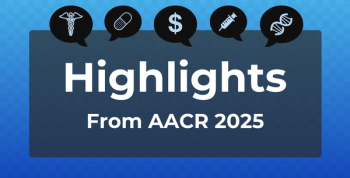
Study Illustrates Kidney Impact After COVID-19 Resolves
More than a year into the COVID-19 pandemic, a new study suggests that individuals recovering from acute kidney injury stemming from COVID-19 will require kidney monitoring after they leave the hospital.
COVID-19 is known to cause
More than a year into the COVID-19 pandemic, a study released Wednesday illustrates another possible long-term part of the pandemic, suggesting that individuals recovering from AKI stemming from COVID-19 will require kidney monitoring after they leave the hospital.
AKI occurs in up to 57% of COVID-19 hospitalizations and 78% of intensive care unit admissions in patients with COVID-19, noted the authors. In addition, reports from early in the pandemic indicate that a little more than a third of patients with COVID-19 who survived had not yet recovered baseline kidney function at a median of 21 days after leaving the hospital.
The kidney issues in patients with COVID-19 are more severe than in patients with kidney disease not linked to the infection; COVID-19 layers on more severe AKI, more need for dialysis, and complicates a full kidney recovery before discharge. The factors contribute to a higher risk for incident chronic kidney disease (CKD) or progression of existing CKD.
In this study, the Yale University researchers included adults admitted and discharged at 5 hospitals within the Yale New Haven Health System network between March 10, 2020, and August 31, 2020.
They found that kidney function declined faster in patients with COVID-19–linked AKI after discharge compared with patients who did not have AKI linked to infection, even after accounting for comorbidities and AKI severity.
Patients received a positive result for SARS-CoV-2, which causes COVID-19, with a reverse transcriptase–polymerase chain reaction test and had developed AKI during their hospitalization according to Kidney Disease: Improving Global Outcomes (KDIGO) creatinine criteria; AKI was also defined by KDIGO criteria.
To follow the trajectory of estimated glomerular filtration rate (eGFR) after hospital discharge, the study included patients who survived past discharge, did not require dialysis within 3 days of discharge, and had at least 1 outpatient creatinine measurement.
Of 4339 unique patient encounters, 182 patients with COVID-19–associated AKI and 1430 patients with AKI not linked with COVID-19 were included in the analysis. The population included 813 women (50.4%), and the median (interquartile range [IQR]) age was 69.7 years (range, 58.9-78.9).
Compared with patients who were not positive for infection, patients with COVID-19–associated AKI were more likely to be Black (73 [40.1%] vs 225 [15.7%]) or Hispanic (40 [22%] vs 126 [8.8%]) and had fewer comorbidities than patients with AKI not related to COVID-19. They had similar rates of preexisting CKD and hypertension.
Those with COVID-19–linked AKI saw a greater decrease in eGFR in the unadjusted model (−11.3 mL/min/1.73 m2/y; 95% CI, –22.1 to −0.4; P = .04) and after adjusting for baseline comorbidities (−12.4 mL/min/1.73 m2/y; 95% CI, –23.7 to −1.2; P = .03).
The eGFR slope difference persisted in the fully adjusted model controlling for comorbidities, peak creatinine level, and whether in-hospital dialysis was required (−14.0 mL/min/1.73 m2/y; 95% CI, –25.1 to −2.9; P = .01).
For those patients (319) who had not recovered from AKI by the time they left the hospital, AKI stemming from COVID-19 was linked with decreased kidney recovery later (adjusted HR, 0.57; 95% CI, 0.35-0.92).
"Identifying predictors of longitudinal eGFR decrease in patients with COVID-19–associated AKI may help prioritize which patients need close outpatient follow-up during the pandemic," the authors concluded. "A better understanding of COVID-19–associated AKI should provide opportunities for clinical trials to improve outcomes and inform the guidelines of post-COVID-19–associated AKI outpatient management."
Reference
Nugent J, Aklilu A, Yamamoto Y, et al. Assessment of acute kidney injury and longitudinal kidney function after hospital discharge among patients with and without COVID-19. JAMA Network Open. Published online March 10, 2021. doi:10.1001/jamanetworkopen.2021.1095
Newsletter
Stay ahead of policy, cost, and value—subscribe to AJMC for expert insights at the intersection of clinical care and health economics.









































